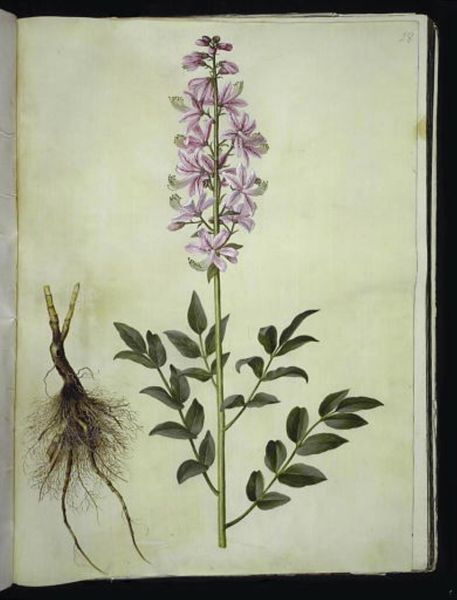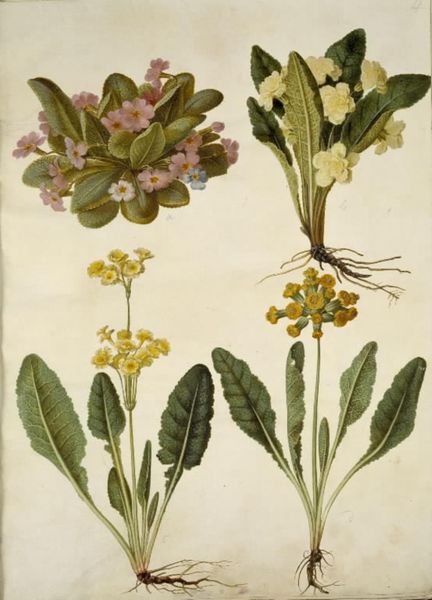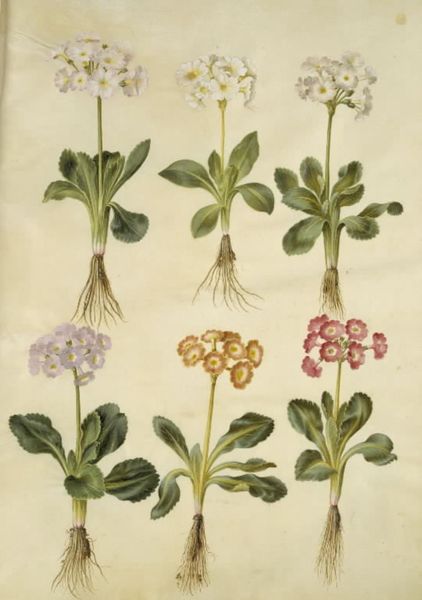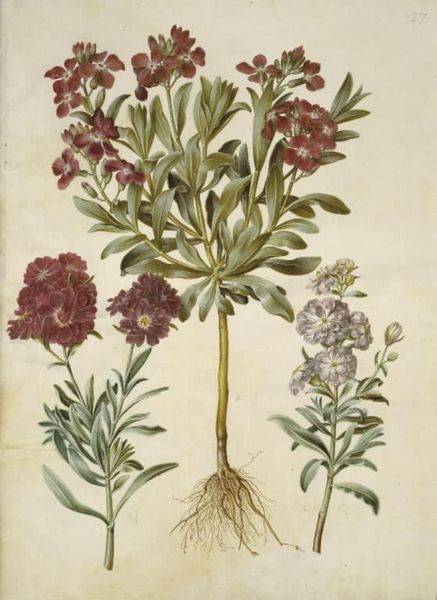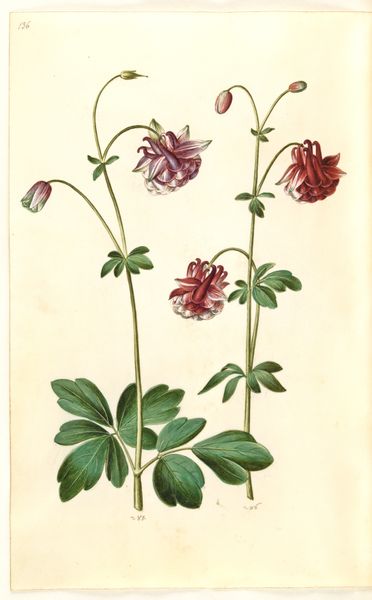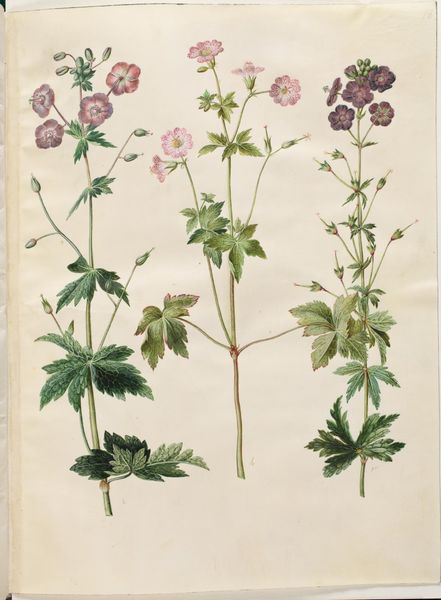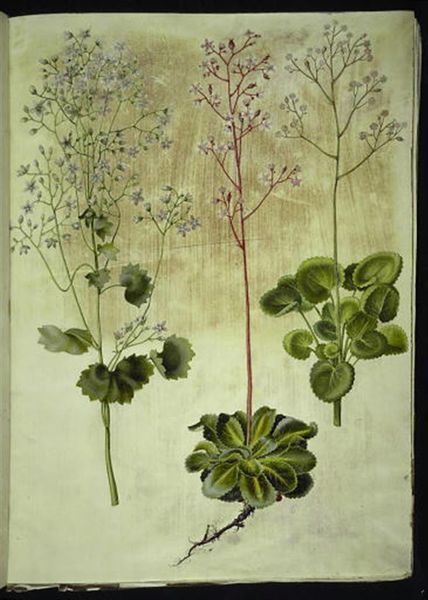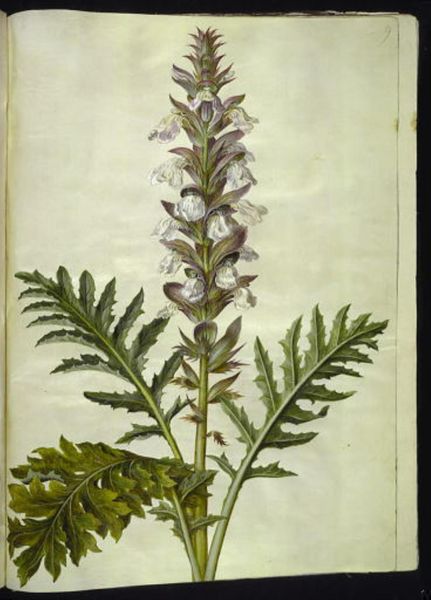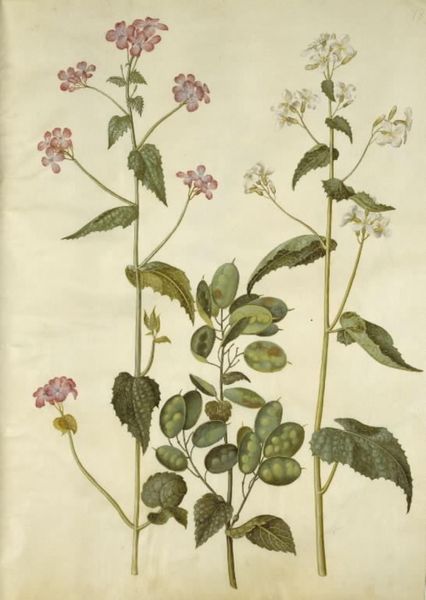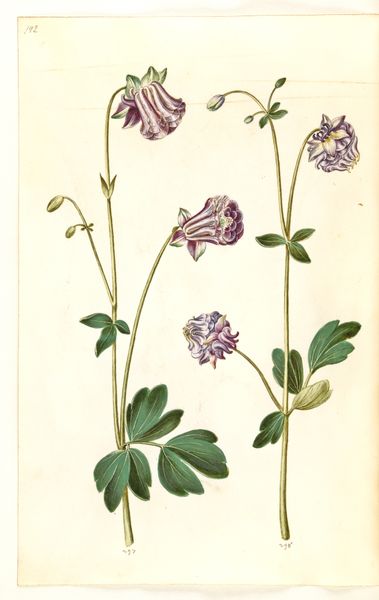
drawing, gouache, watercolor
#
drawing
#
medieval
#
gouache
#
11_renaissance
#
watercolor
#
watercolour illustration
#
watercolor
Dimensions: 505 mm (height) x 385 mm (width) (bladmaal)
Hans Simon Holtzbecker made this botanical study of a Petasites hybridus, or Butterbur plant, in the 17th century using watercolor and gouache on vellum. The artist meticulously rendered the plant’s texture and form, paying close attention to the subtle gradations of color in the leaves and stem. But what does it mean to make art out of nature? Holtzbecker took nature’s ready-made forms and interpreted them through the skilled traditions of painting. Holtzbecker’s art wasn’t made for art’s sake: it was a valued tool of scientific advancement. These detailed studies aided the emerging field of botany by creating an archive of visual knowledge. The materials and techniques used to produce this artwork—vellum, watercolor, and gouache—allowed for detailed, accurate representations that could be shared widely through reproductions. In this way, the act of making art became intertwined with the pursuit of scientific knowledge. By understanding the material and social context of Holtzbecker's work, we can appreciate it as more than just a pretty picture.
Comments
No comments
Be the first to comment and join the conversation on the ultimate creative platform.

